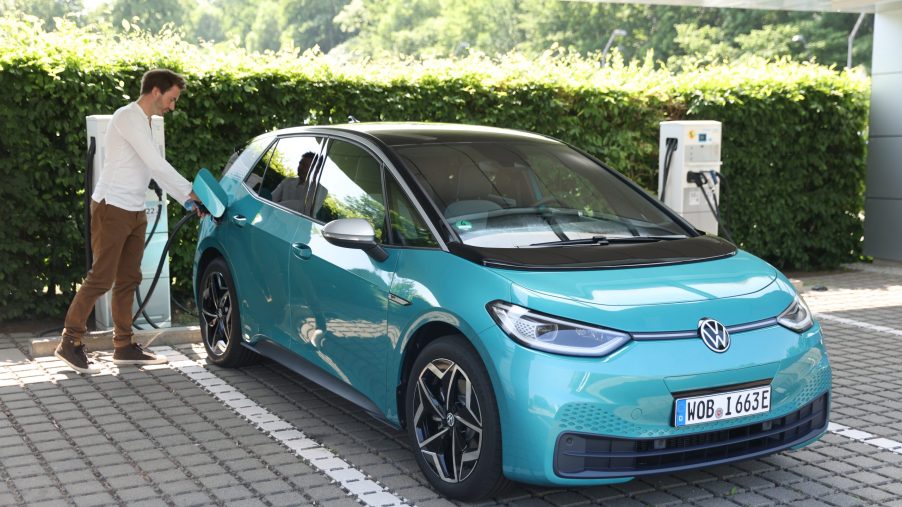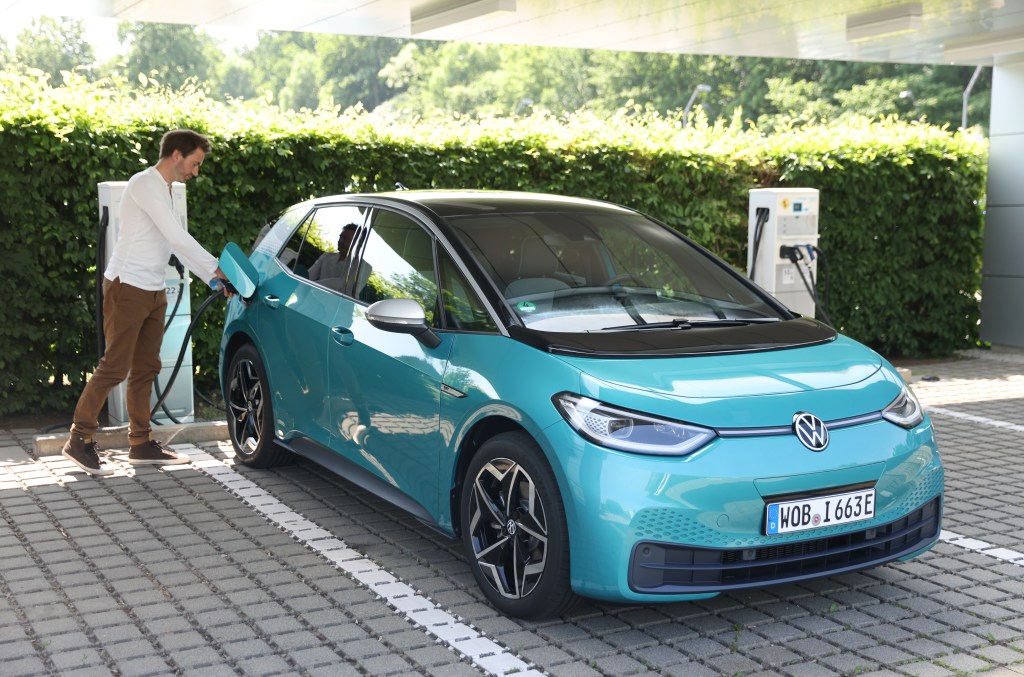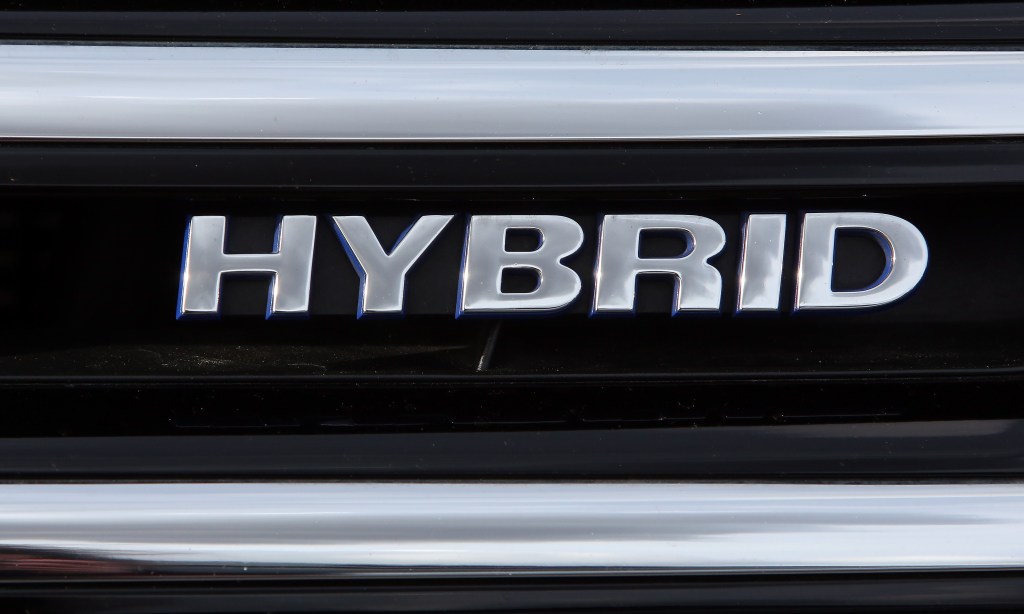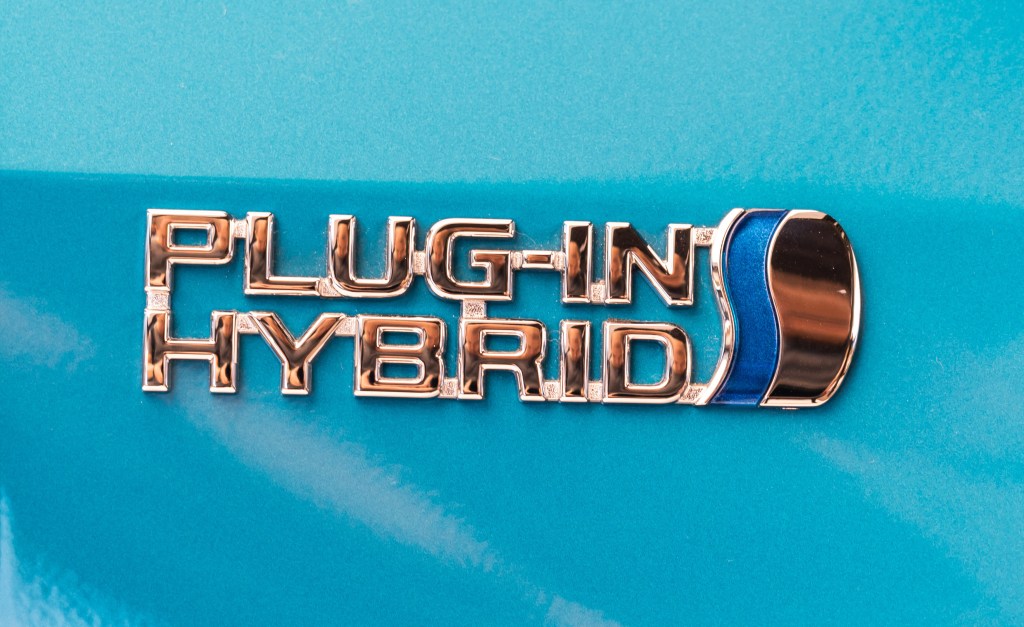
What are BEVs, HEVs, and PHEVs?
In the past 25 years alone, the automobile has been given a major rethink. Hybrids and electric cars started entering the scene in the late 90s but snowballed into popularity due to climate concerns. Yet even as they become mainstream, all the acronyms and abbreviations can get confusing. So let’s decipher the different eco-friendly automobiles, BEVs, HEVs, and PHEVs, in order to decide which is best for you.

BEV: Battery Electric Vehicle
Commonly known as the electric car, a battery-electric vehicle gets all of its power from a battery. The maximum range of a BEV depends on the battery size and the motor’s power usage. You charge your BEV by plugging it into a 120v or 240v power source. These are known as Level 1 and Level 2 charging speeds. Some EVs can handle 350v chargers too, which are known as Fast Chargers.
Pictured above is a Volkswagen ID.3, an electric hatchback capable of over 300 miles per charge if equipped with the larger battery pack. But the only electric VW available in the states (as of right now) is the Volkswagen ID.4, a crossover SUV. Both are fully electric BEVs, and the main benefit of owning one is that they require no gas and produce zero emissions.
But even with more charging power, EVs take longer to “fill up” than a gas-powered car. Both HEVs and PHEVs serve as a happy middle ground, a segue between pure gas and pure electric.
HEVs: Hybrid Electric Vehicles

Shortened to hybrids, HEVs are gasoline-powered cars with a small battery and electric motor inside. Sounds pretty simple, but there are different kinds of hybrids, and each one manages their gas-electric powertrains differently.
In a parallel configuration, the motor and the engine both connect to the transmission. This allows the car to swap between power sources as needed (or use both). In a series configuration, the electric motor drives the car while the gasoline engine recharges the battery. And in a power-split configuration, the car can switch between parallel and series at will, maximizing the car’s efficiency.
All cars, from large SUVs and minivans to compact sedans, can benefit from a hybrid powertrain, but the Toyota Prius is the car that popularized it, especially here in the states. This is an example of a parallel hybrid, which meant that on the first generation Prius, the 70 hp gas engine and 44 hp electric motor made a 114 hp car.
That battery in HEVs, however, isn’t charged by plugging it into a station. Hybrids rely on regenerative braking, which converts the heat generated from braking into electric power. Most hybrid and electric vehicles utilize regenerative braking to increase range.
PHEVs: Plug-In Hybrid Electric Vehicles

As mentioned, HEVs are the segue between ICEs and BEVs. But PHEVs, or plug-in hybrids, are the segue between HEVs and BEVs. Like an HEV, PHEVs rely on both gas and electric power, but the battery in PHEVs is significantly larger.
The batteries in HEVs can power the car for only one or two miles. PHEV batteries, on the other hand, can go anywhere from 10 to 40 miles on electric power alone. In order to fully charge the battery, PHEVs can be plugged in just like a BEV. In other words, PHEVs can be refueled by gas and recharged by electricity.
There are newer Priuses, such as the Prius Prime, that utilize this plug-in technology. But the first mainstream plug-in hybrid was the Chevy Volt. First introduced in 2011, it could go 35 miles on pure electricity (53 miles after the 2016 redesign), and had an 88 horsepower engine that sipped fuel (averaging 40mpg).
Deciding which of these is best for you all depends on the lifestyle you lead. If you live in a city and drive under 200 miles a day, BEVs are an excellent choice. They’re cheap to operate and produce no harmful emissions. HEVs and PHEVs, however, have a range more akin to gas-powered cars, able to handle 600-mile road trips with ease. Regardless, each technology is a step in the right direction to create a greener tomorrow.


